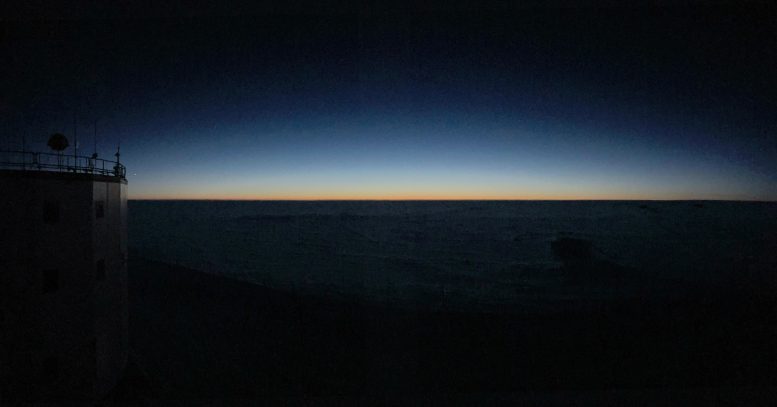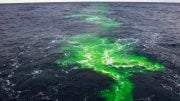
Twilight is a long affair at research station Concordia, situated just a few 1000 km from the South Pole. The Sun disappears completely behind the horizon for over four months in winter. Each day during the Antarctic autumn the sunset is earlier and earlier until it simply does not appear at all. Credit: IPEV/PNRA/ESA–H. Hagson
Twilight is a long affair at the research station Concordia, situated just 1,670 km (1,037 mi) from the South Pole. The Sun disappears completely behind the horizon for over four months in winter. Each day during the Antarctic autumn the sunset is earlier and earlier until it simply does not appear at all.
For the crew of up to fifteen who work and live in one of the most remote outposts in the world, the long goodbye to the Sun is bittersweet. For six months they will live and work in isolation; no supplies or people can be flown in as temperatures can drop to –80°C (-112°F) in the complete frozen darkness outside.
The station consists of two towers, one for noisy machinery and work and the quieter living quarters. This year’s ESA-sponsored medical doctor Hannes Hagson took this picture, the view from the dining area, at 23:00 local time last Sunday; the quiet tower is visible on the left.
Hannes is facilitating biomedical experiments on himself and his crewmates to understand how humans cope with living in extreme isolation. The Italian-French outpost Concordia is located 3,233 m (10,606 ft) above sea level so the crew experience chronic hypobaric hypoxia or lack of oxygen in the brain.
With irregular sunlight, no quick rescue, extreme low temperatures, and little oxygen in the air this is as close as it gets to living on another planet, on Earth.









Be the first to comment on "The Long Goodbye: Twilight at Research Station Concordia"